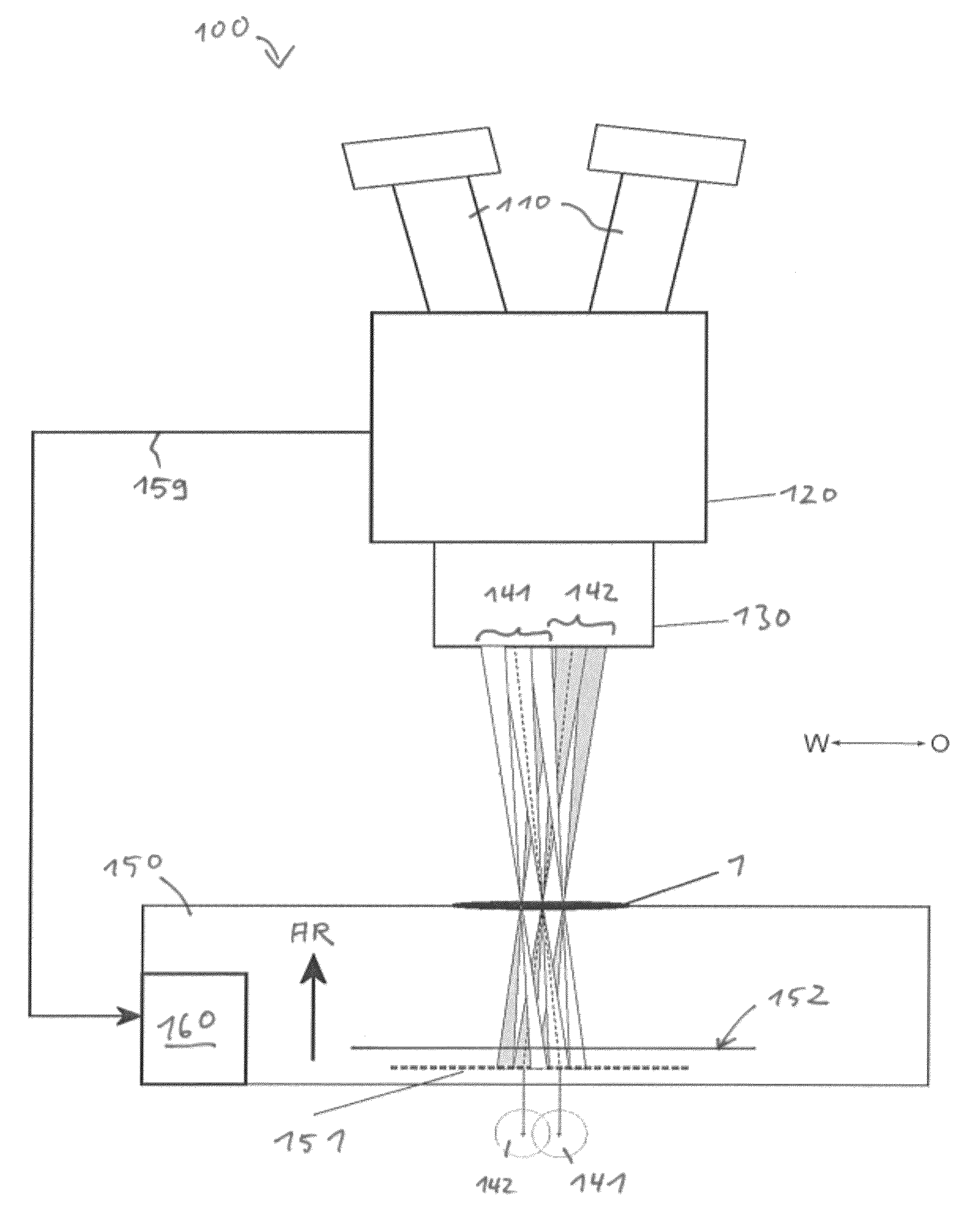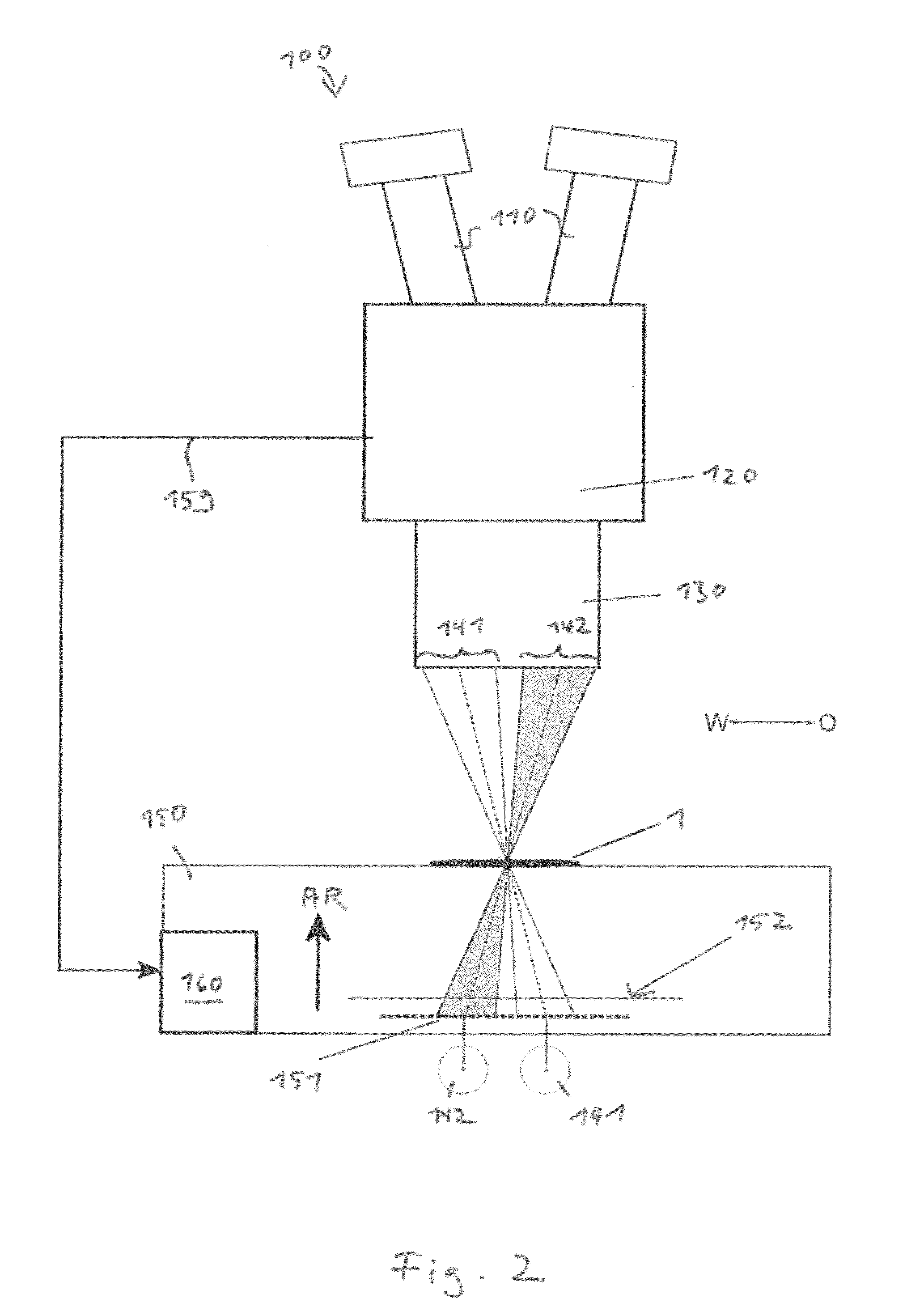Transillumination device for a microscope
a technology of a microscope and a slit is applied in the field of slit transillumination devices, which can solve the problems of unsatisfactory slit rectangular shape, insufficient illumination with diffuse light, and inability to depict the relevant details, etc., and achieves the effects of convenient manufacture, simple operation, and convenient manufacturing
- Summary
- Abstract
- Description
- Claims
- Application Information
AI Technical Summary
Benefits of technology
Problems solved by technology
Method used
Image
Examples
Embodiment Construction
[0040]In the Figures, identical elements are labeled with identical reference characters and, for the sake of clarity, are not explained more than once.
[0041]FIG. 1 schematically depicts, in a sectioned view, a preferred embodiment of a microscope embodied here as stereomicroscope 100. Microscope 100 is equipped with a preferred embodiment of a transillumination device 150 according to the present invention. The microscope is used for examination of an object or sample 1.
[0042]Microscope 100 encompasses two eyepieces 110 that are arranged down-stream from a zoom system 120. Object 1 is viewed through an objective 130. Exemplifying beam paths 141, 142 for the two stereo channels (i.e. for the left and the right eye) are depicted proceeding from objective 130 to sample 1 and on into transillumination device 150. The left channel is labeled 141, and the right channel 142. In the drawing, the observation channels are located next to one another in a W-E direction in the drawing plane. T...
PUM
 Login to View More
Login to View More Abstract
Description
Claims
Application Information
 Login to View More
Login to View More - R&D
- Intellectual Property
- Life Sciences
- Materials
- Tech Scout
- Unparalleled Data Quality
- Higher Quality Content
- 60% Fewer Hallucinations
Browse by: Latest US Patents, China's latest patents, Technical Efficacy Thesaurus, Application Domain, Technology Topic, Popular Technical Reports.
© 2025 PatSnap. All rights reserved.Legal|Privacy policy|Modern Slavery Act Transparency Statement|Sitemap|About US| Contact US: help@patsnap.com



